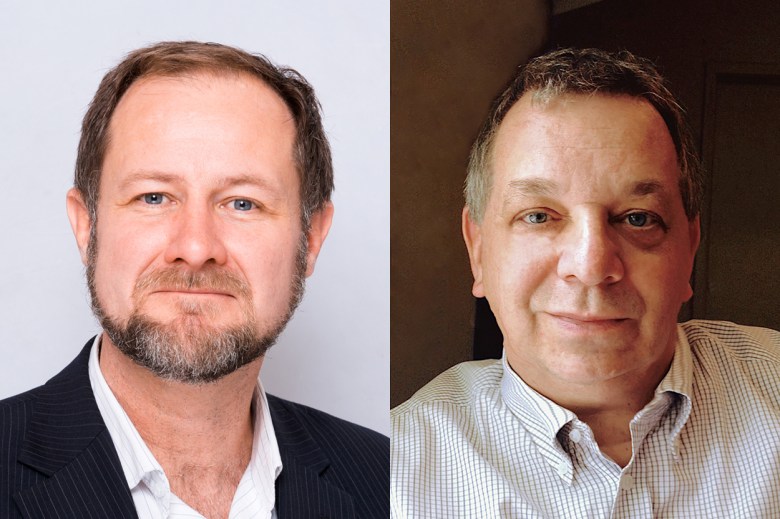
Smart sensing solutions tailored by expert researchers maximise control and automation capabilities in printing processes to reduce overall costs and environmental impact.
NSW Smart Sensing Network (NSSN) development manager Dr Donald McCallum said smart sensing allows for precise and continuous measurement throughout the manufacturing cycle from production and distribution to deconstruction and recycling.
“The real benefit of smart sensing is how it can add value to the printing processes by automating quality controls and rapid sensing of new materials that result in high quality printed products,” Dr McCallum said.
In developing customised smart sensing solutions, scientists and engineers fuse multiple sensing techniques from areas such as optical sensing and surface chemistry alongside data analytics to enhance the manufacturing process.
“We can expect that environmental controls will get more stringent as we understand more about toxins and chemistry in our industrial processes, but we should think of this as an opportunity,” he said.
“Printing is closely aligned with the packaging industry and here we can see big moves are being made with regards to the circular economy.”
Australian universities have a long-standing reputation in helping industry partners with problem solving and overcoming complex challenges.
“We can’t rely on all of the solutions to come out of Europe, Japan or America,” Dr McCallum said. “Australian universities are local to us, and they very often have the solutions.”
The NSW Smart Sensing Network (NSSN) draws upon a broad pool of scientific expertise with application across a range of industries and sectors. A consortium of nine leading research universities across NSW and ACT, the NSSN brings together expertise in academia, industry and government to position NSW and Australia as a global leader in smart sensing innovation.
“There is an excellent understanding of printing processes within the research universities across NSW and ACT,” Dr McCallum said.
PEGRAS managing partner Dr Stephanus Peters said in recent decades, significant progress had been made industry-wide in the sustainability space with great expansion in the use of environmentally friendly green chemistry and increasing focus on reducing environmental footprint as a manufacturing sector.
PEGRAS is a technical solutions consulting company operating in the associated fields of chemistry, print and packaging media, industrial equipment and related manufacturing sectors. PEGRAS consultants have experience in a wide range of ink manufacturing, offset plate and printing blanket manufacturing, and machine and system designs.
“Universities and research institutes can help in many ways, be it environmental solutions, intergraded technology developments, energy savings or personalised automatisations and Industry 4.0 access,” Dr Peters said.
Dr Peters explained the printing industry has always concentrated on mass production of durable products that are ‘fit for purpose’ and cost optimised.
“Labels are designed to stick on bottles and not fall off or be damaged when in contact with liquids or in a refrigerator,” Dr Peters said. “There are several standards and legislations around this issue.”
“Unfortunately, these rules are not optimised for end of life recycling or re-purposing, and there is an obvious and urgent need to develop new ways to remove and deconstruct the labels.”
PEGRAS, in collaboration with NSSN and several Australian universities, is looking for solutions to tackle some of these environmental problems.
“We have to start with the environmental end in mind; this means at the product design stage. Selection of substrates that can be recycled and inks, coatings and adhesives that can be removed at the end of [product] life cycle for reuse in the circular economy model,” Dr Peters said.
For years printing has been dominated by the developments coming out of Germany, Japan or the US driven by the larger manufacturers.
Many printing companies in Australia are middle to small businesses which require new products and systems that fit individual needs.
“Integrated technologies such as new innovated drying systems, energy-saving innovations and mixed printing processes which all can lead to money-saving can be developed together with local universities,” Dr Peters said.
“The Printing industry is now a very complex production environment, and in collaboration with NSSN, we help solve complex challenges.”
NSSN development manager Dr Donald McCallum and PEGRAS managing partner Dr Stephanus Peters as interviewed by NSSN media and public relations officer Shahrzad Abbasi.
This article was first published in the May 2020 issue of AP. The digital version of the magazine is available here.
Comment below to have your say on this story.
If you have a news story or tip-off, get in touch at editorial@sprinter.com.au.
Sign up to the Sprinter newsletter
